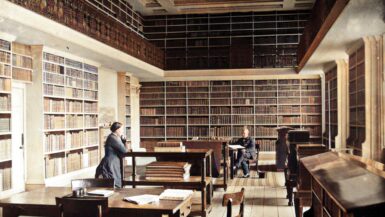The study of genealogy and family history is a fascinating journey that helps connect the dots of our ancestors’ lives. Census records, in particular, serve as a treasure trove of information that can help bring our past to life. In this comprehensive guide, we’ll explore the intricacies of analyzing census records, specifically focusing on Irish history, and learn how to glean valuable insights from population data. We’ll discuss the importance of census records, the types of data available, and the various ways these resources can be used in genealogical research.
Census records are crucial sources of information for genealogists and family historians, providing a snapshot of the population at a given point in time. They contain valuable details about individuals, families, and communities, including names, ages, occupations, and places of birth. By analyzing these records, researchers can uncover patterns, trends, and relationships, helping to paint a vivid picture of the lives of our ancestors.
In the context of Irish genealogy, census records take on added significance due to the loss of many vital records during the Irish Civil War. The 1922 fire at the Public Record Office destroyed numerous historical documents, including parish registers and wills. As a result, census records are among the few surviving sources that can provide crucial information about Irish ancestors.
A Brief History of Irish Census Records
The first census in Ireland was conducted in 1821, and subsequent censuses were held every ten years thereafter. Unfortunately, many of these early census records have not survived. The only complete surviving census records for Ireland are from 1901 and 1911. Some fragments from the 1821, 1831, 1841, and 1851 censuses also exist, but they cover only a small percentage of the population.
The 1901 and 1911 censuses are particularly valuable for Irish genealogy, as they were the first to record detailed information about each individual in a household. These records can provide a wealth of insights about family structures, living conditions, and migration patterns during a pivotal period in Irish history.
Types of Census Records and the Information They Contain
Irish census records can be broadly categorized into two types: full population censuses and census substitutes.
- Full Population Censuses: These records provide the most comprehensive information about the population, including details about every individual living in a household. The 1901 and 1911 censuses are the most complete examples, containing information such as names, ages, occupations, relationships to the head of the household, marital status, religious affiliation, and places of birth.
- Census Substitutes: Due to the loss of many early Irish census records, genealogists often rely on alternative sources that can provide similar information. Examples of census substitutes include land and tax records, church registers, and voter lists. While these sources may not be as comprehensive as full population censuses, they can still offer valuable clues about our ancestors’ lives.
Challenges and Limitations of Irish Census Records
Despite their importance, Irish census records come with their own set of challenges and limitations. Some of the key issues that researchers may encounter include:
- Incomplete Records: As mentioned earlier, many early Irish census records have been lost or destroyed. This means that researchers may face gaps in the available data, making it difficult to trace family lines back through multiple generations.
- Variations in Spelling and Transcription Errors: Researchers should be aware that spelling variations and transcription errors can occur in census records. Names, places, and occupations may be spelled differently than expected, or errors may have been introduced during the transcription process. It’s essential to keep an open mind and consider alternative spellings when searching for ancestors in the records.
- Language and Cultural Differences: In some cases, census records may be written in Irish, particularly in rural areas where the language was still widely spoken. Researchers may need to familiarize themselves with common Irish terms and phrases to accurately interpret the information in these records.
- Privacy Restrictions: Some census records may be subject to privacy restrictions, particularly those that contain information about living individuals. In such cases, access to the records may be limited, or certain details may be redacted to protect personal privacy.
How to Access Irish Census Records
Irish census records are available through a variety of sources, both online and offline. Some key resources include:
- The National Archives of Ireland: The National Archives holds the original 1901 and 1911 census records, as well as surviving fragments from earlier censuses. These records have been digitized and can be accessed for free through their online database.
- Local History Centers and Libraries: Many local history centers and libraries in Ireland hold microfilm copies of census records, as well as a range of other genealogical resources. These facilities can be an excellent source of information for researchers who prefer to work with physical records.
- Online Genealogy Platforms: Websites such as Ancestry.com, Findmypast, and FamilySearch offer access to Irish census records and other genealogical resources, often as part of a subscription service. These platforms can be a convenient way to search for ancestors and access a wide range of related records.
Analyzing Irish Census Records: Tips and Techniques
When analyzing Irish census records, there are several strategies and techniques that can help researchers uncover valuable insights:
- Start with Known Information: Begin your search by entering details about your ancestors that you already know, such as names, dates, and places. This can help to narrow down your search results and make it easier to identify relevant records.
- Look Beyond Names: Don’t focus solely on names when searching for ancestors in census records. Consider other identifying information, such as ages, occupations, and places of birth, to help confirm that you’ve found the right individuals.
- Analyze Household Composition: Pay attention to the relationships between individuals in a household, as this can provide clues about family structures, extended family members, and migration patterns.
- Compare Multiple Census Years: Analyzing records from multiple census years can help to reveal changes in family circumstances, occupations, and living conditions over time. This can also help to confirm the accuracy of the information in individual records.
In conclusion, Irish census records, despite their limitations, provide a wealth of information that can help researchers uncover valuable insights about their ancestors and the broader context of Irish history. By understanding the different types of census records, knowing where to access them, and employing effective search techniques, genealogists can bring the stories of their Irish ancestors to life and enrich their understanding of their family’s past.





Leave a reply